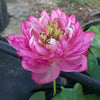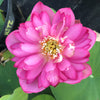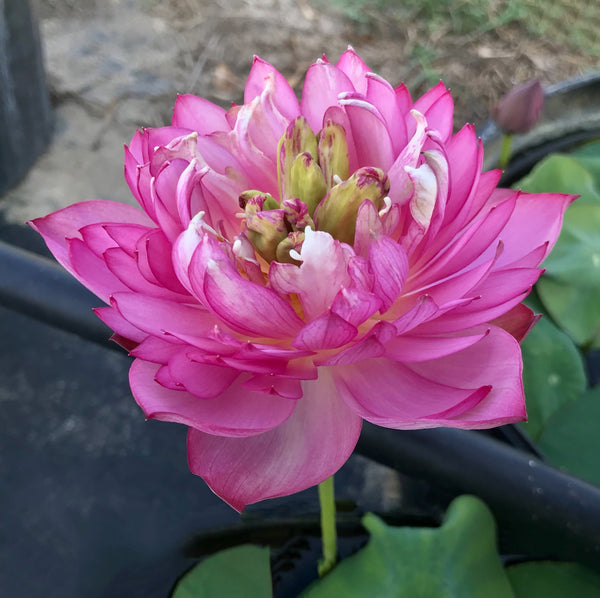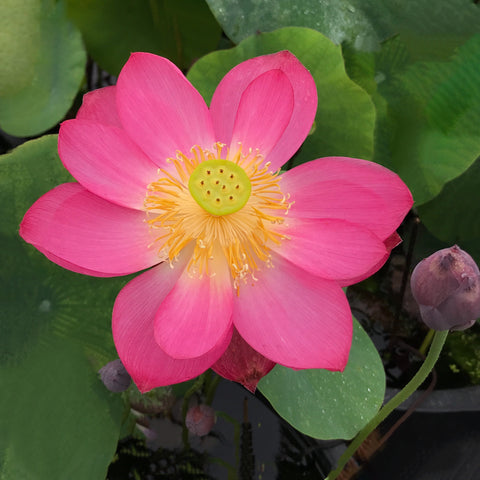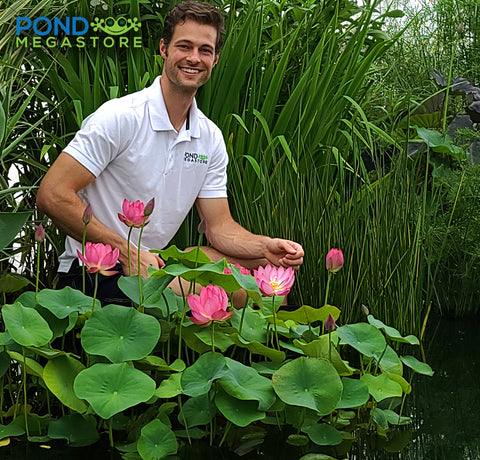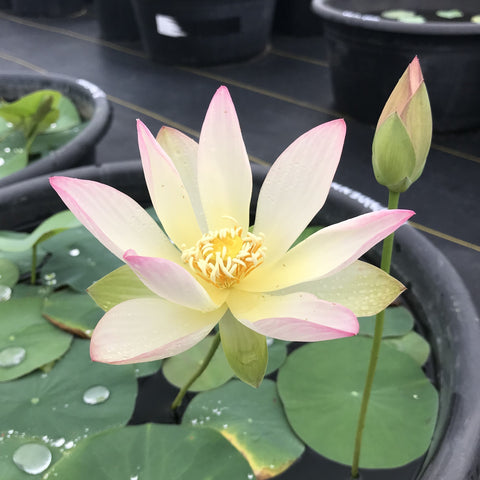Plant Description
Pearls On A Red Plate Lotus is an incredible bloomer with bloom after bloom all season long! This small gem grows to 13 inches tall and may also be grown as a micro-lotus. The multi-petal flowers on this tiny jewel are so pretty in dazzling shades of bright-pink! Pearls On A Red Plate Lotus is a heavy bloomer! Micro-Bowl/Red/Multi-Petal
How to grow your lotus tuber
You can grow this small variety in a wide container that is 6 - 10 inches wide and 6 inches deep. Fill the container 2/3 of the way with loam soil. Dig a shallow trench across the surface of the soil and place the lotus tuber in the trench, taking care not to break or damage the growth tips. Cover all but the growth tips with an inch of soil. Gently add 2 inches of water above the tuber and place your lotus tuber in a sunny area outdoors (8 - 12 hours of sunlight daily). Check the water level often and make sure you replenish the water that has evaporated from the container with warm water. Cold water will delay the growth of your lotus. In a week or two you should have small coin leaves on the surface of the water. A week or two after that you should have aerial leaves growing out of the water. Once you have aerial leaves, it is time to fertilize your lotus.
How to fertilize your lotus
We recommend a slow release fertilizer like Waterlily World Fertilizer Tabs for optimum growth and best bloom. Never fertilize your lotus until you have aerial leaves growing out of the water. Make sure your first fertilizer application is with 1/2 the recommended dosage, otherwise you may burn the plant. The second dose may be applied two weeks after the first dose. You should fertilize your lotus once each month during the growing/blooming season and apply the final dose in early September. This will allow your lotus to go into dormancy naturally. Waterlily World Fertilizer Tabs are very easy to use, simply press the tabs into the soil near the roots of your lotus tuber, taking care not to damage the roots.
Please read our complete 'Lotus Planting Guidelines' which are sent with each lotus purchase.
What Is Loam Soil?
Loam soil is a good mixture of Topsoil and Sand
If you are lucky enough to have good topsoil in your backyard, by all means, use your topsoil. All you will have to do is add fertilizer. If you are not so lucky--and your backyard is sand or heavy red or yellow clay, you can mix up a batch of loam soil.
You can create your own loam soil by mixing these two ingredients together
- 2/3 Inorganic Topsoil (Little or no organic material added)
- 1/3 Pool Filter Sand
Mix together thoroughly with a little water. Your soil should clump when squeezed. If your soil is mixed properly, it will not muddy your pond water.
You can purchase inexpensive bags of inexpensive / poor Topsoil at Lowes or Home-Depot. Good soil clumps together as a ball in your hand with only a little moisture.
Don't buy brands like Scott's or Miracle-Gro, as they will contain too much organic matter that can foul your water. Buy an unbranded bag of topsoil instead.
You can purchase Pool Filter Sand at any store that sells pool supplies.
Loam soil is well suited for all aquatic plants (except oxygenators). Oxygenators rarely need to be planted, just anchored in the substrate or in a container filled with sand or 1/8 inch pea gravel.
Sand holds little water but does allow for aeration and drainage.
Some DO's and DON'TS regarding Aquatic Planting Soil
DO NOT use potting soils ( as they are too light and will float right out of the pot). Potting Soil has organic material that will rot and foul your water!
DO NOT add too much composted material (as it is too rich in organic matter and it will ferment underwater and destroy the ecology of your pond).
DO NOT use 100% calcined clay as there is no nutritional value in calcined clay.
DO NOT add rocks, stones or pebbles to the top of your planting container as this will inhibit the growth of your plants. Plants do not grow in rocks and stones in nature!
DO NOT purchase API Aquatic Planting Media or Microbe-lift Aquatic Planting Media as these products are NOT suitable for waterlilies, lotus or most other pond plants. They are suitable for submerged grasses ONLY!

